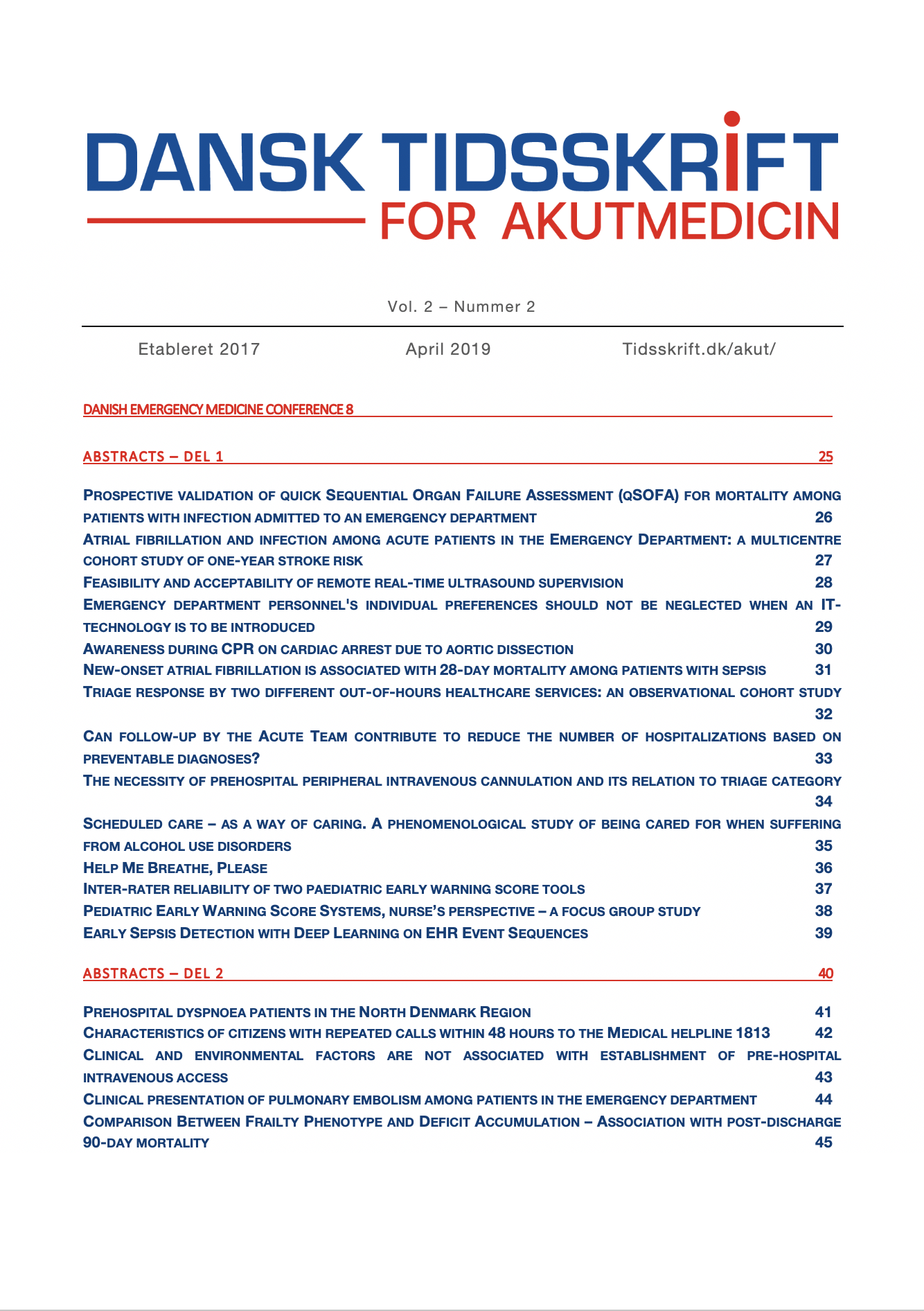Resumé
Background: Emergency patients with suspected time dependent diseases are met by specialized trigger teams upon arrival at the hospital. These teams have an important function in stabilizing and treating patients. Knowledge of how often the different trigger teams are activated in combination with description of the patients and their prognosis can help qualify decisions in emergency medicine planning.
Objectives: To describe frequency, patient characteristics and 7-day mortality for all adult patients (≥18 years) managed by the orthopedic, medical, neurological thrombolysis or primary percutaneous coronary intervention for ST elevation myocardial infarction (STEMI) trigger teams at Odense University Hospital (OUH).
Methods: All patients met by a specialized trigger team at arrival to OUH between 1 November, 2012 and 30 September, 2015 were included. Data on g demographics, etiology and 7-day mortality will be presented descriptively. The number of trigger team activations per 100,000 person years in the background population, with varying catchment areas, will be presented.
Results: During the 35 observation months, there were 8,072 trigger team activations for adult patients at arrival to OUH (mean 7.6) per day. A trigger team was activated daily 1.3 times for trauma, 2.7 times for medicine, 1.5 times for thrombolysis, and 2.1 times for STEMI, or 161, 340, 72 and 64 activations per 100,000 person years, respectively. Mean age was 47 for trauma, and approximately 67 for the other teams. Some 72% of trauma and STEMI patients were male with 55% for medical and thrombolysis patients. Mean length of stay was 3-4 days for all groups. The 7-day mortality was 10% (95% CI 9-12) for trauma, 16% (95% CI 14-17) for medicine, 3% (95% CI 3-4) for thrombolysis and 6% (95% CI 5-7) for STEMI.
Conclusions: The volume of trigger team activation varied in both frequency and per 100,000 person years with activation of the medical teams being most frequent. Likewise, patients treated by the medical trigger team had the highest mortality, followed by trauma while patients activating the STEMI team showed the lowest mortality.
Licenseret under en Creative Commons Kreditering 4.0 International-licens (CC BY 4.0).
© Forfatterne.

